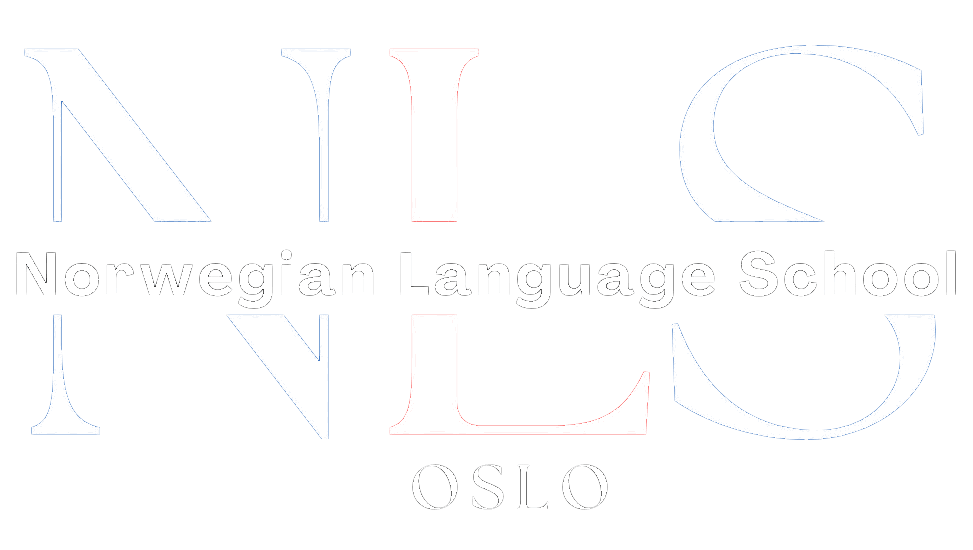

Communication, Culture, and Clinical Excellence: A Deep Dive into Norwegian Language Training for Healthcare Professionals
For decades, Norway’s healthcare system has been praised for its strong public support, patient-centered orientation, and high standards of professional practice. What might be less visible to the casual observer, however, is just how critical the Norwegian language is to the smooth functioning of this system. From speaking with patients about symptoms to documenting progress notes, from collaborating in interdisciplinary teams to understanding local regulations, fluency in Norwegian is an essential component of delivering quality care.
This comprehensive article explores why Norwegian language proficiency is indispensable for healthcare professionals, how specialized courses can fill this gap, and what learners can do to achieve long-lasting competence. We will dive into the key challenges, recommended strategies, and the benefits that medical practitioners can expect when they invest time and energy in mastering Norwegian. If you plan to practice medicine or related healthcare work in Norway, this guide will illuminate the path toward effective communication and professional integration.
Table of Contents
Toggle1. Norway’s Healthcare System: A Model of Accessibility and Quality
- Universal Coverage for All
Norway’s healthcare operates under a universal coverage model. This ensures every resident receives necessary medical services, creating a diverse patient population. Healthcare professionals encounter individuals of varied cultural backgrounds and linguistic needs, yet Norwegian remains the lingua franca that anchors clinical conversations. - Primary Care and Specialist Services
Norwegians typically start with primary care (fastlege system), and if needed, are referred to specialized care. In each step of the referral chain, precise communication is critical to ensure continuity of treatment. Without robust Norwegian language skills, even the most seasoned physician might struggle to navigate these channels effectively. - Preventive Care Emphasis
Norwegian healthcare goes beyond treatment to focus on preventive strategies—regular check-ups, educational campaigns, and mental health support. Participating in or leading such initiatives requires proficiency in the language to convey health advice accurately and empathetically to the public. - Professional Collaboration and Technology
Whether it’s telehealth consultations, e-prescriptions, or multi-specialty care plans, technology is deeply woven into Norwegian healthcare. Medical staff frequently exchange electronic notes, fill out patient forms, and input data into national registries—all of which necessitate strong Norwegian language skills for compliance and clarity.
2. The Crucial Role of Language in Patient-Centered Care
Patient-centered care isn’t just a buzzword; it is a core value in modern medicine, particularly in Norway. Here’s how language proficiency underpins this approach:
- Accurate Symptom Assessment
Patients must feel comfortable describing their symptoms in detail. A healthcare provider who converses fluently in Norwegian can ask clarifying questions, delve into subtle aspects of the patient’s experience, and reduce the chance of misdiagnosis. - Informed Consent and Legal Requirements
Norwegian law mandates clear communication about treatment options, risks, and benefits. Language barriers can impede informed consent, exposing healthcare facilities and providers to legal risks and ethical dilemmas. - Empathy and Rapport
Medicine isn’t just about biology; it’s about human connection. Speaking to patients in their native language can build rapport and trust, which in turn can lead to better compliance with care plans and improved clinical outcomes. - Multi-Cultural Sensitivity
Although Norway is increasingly multicultural, Norwegian remains the unifying official language. Healthcare providers who speak Norwegian can better mediate cultural differences, bridging gaps in understanding to ensure equitable treatment.
3. Bridging the Gap: Why General Language Courses Aren’t Enough
Many aspiring professionals wonder: “Why can’t I just take any Norwegian language course?” While general courses are beneficial for day-to-day interactions, they rarely address the specialized demands of healthcare. Below is a closer look at why a targeted course—such as the NLS Norwegian’s Norwegian for Health Workers Course—is often a game-changer:
- Technical and Clinical Vocabulary
Medical settings teem with specialized terms related to anatomy, pharmacology, diagnostics, and procedures. A specialized course dedicates significant time to mastering this terminology, ensuring that you can interpret lab results and explain them to colleagues or patients in correct Norwegian. - Realistic Simulations and Role-Plays
Reading dialogues about grocery shopping or tourism hardly prepares you for a conversation about post-operative complications. Specialized courses use role-plays drawn from genuine medical scenarios, thus providing practice in context-specific communication. - Focus on Professional Standards
Norwegian healthcare has specific protocols, ethical guidelines, and administrative procedures. A specialized course introduces these frameworks, equipping learners with the knowledge to align their language use with local norms and expectations. - Shorter Learning Curve
By concentrating on the language skills most relevant to healthcare, specialized courses often help participants achieve professional fluency faster, saving time and energy that might be lost in purely general courses.
4. Anatomy of a Specialized Norwegian for Health Workers Course
Although different institutions vary in their format and emphasis, certain core elements are typically present in a robust healthcare-focused Norwegian course:
- Foundational Grammar in Medical Contexts
Even if you already have some grounding in Norwegian, specialized courses often begin by revisiting grammar essentials. By applying these grammatical concepts to clinical conversations—such as describing symptoms in past tense or giving future care instructions—learners see immediate relevance. - Comprehensive Medical Vocabulary
- Anatomy and Physiology: Terms related to organ systems, bodily functions, and medical conditions.
- Diagnostics: Vocabulary for tests, imaging procedures, lab results, and diagnoses.
- Therapeutics: Common treatments, medications, dosage instructions, and patient education materials.
- Case-Based Learning
Instructors often present a case (e.g., a patient with diabetes who comes to the clinic complaining of fatigue). Participants read through the case in Norwegian, discuss possible diagnoses, treatment steps, and follow-up instructions. This method cements vocabulary in a hands-on manner. - Practical Exercises for Clinical Settings
- Patient Interviews: Gather patient histories, clarify symptoms, and conduct mental health assessments.
- Emergency Protocols: Practice quick, accurate communication needed during emergencies.
- Family Consultations: Learn how to speak with family members about patient progress or discharge plans.
- Ethical and Cultural Competence
Norwegian medical practice is guided by laws protecting patient autonomy, confidentiality, and dignity. Courses often highlight these ethical dimensions, helping healthcare workers apply Norwegian language skills with sensitivity and respect.
5. The Pedagogy Behind Effective Language Acquisition
Learning a language, especially one as nuanced as Norwegian, can feel daunting—especially for busy healthcare professionals. The following are proven pedagogical techniques used in specialized courses:
- Spiral Learning
Rather than tackling vast amounts of vocabulary at once, spiral learning reintroduces topics in increasingly complex contexts. For instance, the term “infeksjon” (infection) may first appear in a basic dialogue and later resurface in a complex discussion about antibiotic resistance. - Immersive Environments
Many top-tier courses create immersive experiences—even if partially online—where participants are encouraged (or required) to communicate primarily in Norwegian during sessions. Immersion fosters quicker adaptation and helps learners overcome shyness about speaking. - Immediate Feedback Loops
Rapid feedback from instructors or peers prevents incorrect language usage from becoming ingrained. This is especially vital in a field where small language mistakes can lead to serious misunderstandings in patient care. - Integration of Technology
- Language Apps: Tools like Memrise or Quizlet can help memorize specialized vocabulary.
- Virtual Classrooms: Live, interactive sessions allow participants to practice with instructors in real time, no matter their location.
- Speech Recognition Software: Some courses incorporate technology to help fine-tune pronunciation, a critical aspect of Norwegian fluency.
6. Overcoming Obstacles: Common Pain Points for Healthcare Professionals
Despite best intentions, healthcare professionals learning Norwegian often encounter several hurdles:
- Time Constraints
Shift work, on-call responsibilities, and the emotional toll of healthcare practice can leave minimal room for language study. Strategies like micro-learning (short, focused study breaks) and scheduling daily “language blocks” often prove effective. - Emotional Stress
Working in healthcare is stressful; adding language study can compound burnout. Maintaining a balanced approach—setting realistic goals, celebrating small victories, and seeking peer support—can mitigate stress. - Fear of Making Errors in High-Stakes Situations
Miscommunication in a healthcare setting could have serious consequences. Practitioners may avoid speaking Norwegian out of fear. However, consistent practice under supervision, plus confirming comprehension with patients (“Could you repeat what I said in your own words?”), can build confidence. - Dialect and Cultural Differences
Norway has multiple dialects. While Bokmål is widely used in formal settings, patients might speak dialects that differ significantly from textbook Norwegian. Exposure to media from various regions and seeking clarifications from colleagues can help. - Limited Exposure Outside Clinical Work
If your social circle or workplace primarily uses English, you might not get enough real-world Norwegian practice. Proactively engaging with local communities, attending social events, or volunteering at health fairs can supplement language exposure.
7. Long-Term Advantages of Achieving Norwegian Fluency
Mastering Norwegian is not just about surviving day-to-day tasks in a hospital; it’s a long-term investment in your professional development and personal growth:
- Enhanced Employability
Many Norwegian healthcare institutions outright require proof of Norwegian proficiency. Even if not required, showing strong language skills can distinguish you from other candidates. - Career Progression
Leadership roles—such as department head, nurse manager, or medical researcher—often demand effective communication with administrators, policy-makers, and the general public. Fluency in Norwegian can fast-track promotions. - Broader Social Integration
Beyond the workplace, speaking Norwegian enriches your daily life in Norway. Whether it’s shopping, building friendships, or engaging in cultural events, language fluency aids deeper integration. - Opportunities for Research and Academia
Medical journals, conferences, and collaborative research projects in Norway frequently operate in Norwegian or require bilingual participation. Fluency opens the door to presenting at conferences, publishing local research, and networking with national experts.
8. Case Illustrations: From Language Barrier to Language Bridge
To better illustrate the transformative power of Norwegian language proficiency, consider these hypothetical examples:
Case A: Andrea, a Midwife from Italy
Andrea arrives in Norway with a midwifery degree and two years of hospital experience. She completes a general Norwegian A2-level course, but struggles during clinical rotations. Terms like “fødselshjelp” (obstetrics) and “svangerskapsomsorg” (antenatal care) are overwhelming. After enrolling in a specialized “Norwegian for Health Workers” program, Andrea begins practicing real-world dialogues concerning labor pains, epidurals, and birth plans. She gains the confidence to conduct prenatal classes in Norwegian, forming bonds with expectant mothers who feel more secure when spoken to in their native language.
Case B: Dr. Osei, a General Practitioner from Ghana
Dr. Osei holds extensive experience in general practice. Although he has conversational Norwegian, he finds it difficult to navigate advanced medical consultations, especially when dealing with complex chronic diseases. By attending a specialized course, he polishes his ability to explain treatment regimens, side effects, and follow-up plans in culturally sensitive terms. Dr. Osei also learns about Norwegian ethics rules and patient rights. Over time, his patient satisfaction scores rise, and he’s offered a permanent position at the clinic—an acknowledgment of both his clinical skills and linguistic competence.
9. Practical Self-Study Techniques for Healthcare Professionals
While a specialized course is invaluable, self-directed study is where much of the real progress happens. Here are some tried-and-true strategies:
- Reading Medical Journals in Norwegian
Subscribing to or accessing online Norwegian medical publications helps you build advanced vocabulary. Highlight unfamiliar words and revisit them regularly. - Watching Norwegian Health Documentaries
Television programs or YouTube channels focusing on healthcare, lifestyle, or science can acclimate you to various accents, slang, and professional language styles. - Creating Clinical Flashcards
Focus on specific categories—respiratory system, cardiology, pediatrics—one at a time. Flashcards can also include sample sentences illustrating how to use terminology in context. - Peer-to-Peer Conversation Clubs
If you have colleagues also learning Norwegian, form a group that meets regularly to practice. Rotate roles (e.g., patient, nurse, doctor) to cover a variety of conversational angles. - Reflective Journaling
After each shift, write a short journal entry in Norwegian about an interesting case, a new medical term, or a patient interaction. This enhances retention and pinpoints areas needing further review.
10. Cultural Competence: The Hidden Ingredient in Successful Communication
Language is more than words. Cultural understanding profoundly impacts how you interact with patients, colleagues, and Norwegian society at large:
- Patient Autonomy and Privacy
Norwegians value independence and directness. A good command of language helps you respect personal boundaries while still eliciting necessary clinical information. - Equality and Teamwork
Hierarchical structures may be less pronounced in Norwegian workplaces compared to some other countries. Familiarity with the cultural norms of flat management structures ensures more productive teamwork. - Respect for Personal Space
Physical contact—like hugging or even a friendly pat on the shoulder—may be more reserved in Norway. Language patterns that express courtesy without encroaching on personal space can matter greatly. - Understanding Humor and Social Cues
Humor is often culturally specific. Being able to comprehend or gently use Norwegian humor can ease tensions and forge stronger relationships in a stressful healthcare environment.
11. Introducing the NLS Norwegian’s Norwegian for Health Workers Course
For those ready to take the plunge, the Norwegian for Health Workers Course from NLS Norwegian stands out as a comprehensive, flexible, and industry-relevant solution:
- Tailored Modules
The curriculum delves into anatomy, diagnoses, and patient communication strategies. This targeted approach accelerates mastery of healthcare-centric vocabulary. - Expert Instructors
Language specialists with a background in Norwegian healthcare guide students, offering real-time feedback on pronunciation, grammar, and usage. - Flexible Scheduling
Recognizing the busy lives of healthcare workers, the program often accommodates various schedules and learning paces—online or in-person. - Community Support
Students frequently have access to peer forums or study groups, fostering collaboration, networking, and mutual encouragement. - Practical Emphasis
Role-playing sessions, interactive quizzes, and case discussions mirror the demands of daily medical practice, ensuring learners are “clinic-ready” upon completion.
12. Crafting a Roadmap to Success: Actionable Steps
Embarking on your Norwegian language journey can feel overwhelming. Break it down into actionable steps:
- Assess Your Baseline Skills
Take a diagnostic test or consult with an instructor to identify your strengths and areas for improvement, whether it’s vocabulary, listening comprehension, or professional writing. - Set SMART Goals
- Specific: “Learn 50 Norwegian medical terms in cardiology within two weeks.”
- Measurable: Track progress through quizzes or flashcard apps.
- Achievable: Ensure the goals align with your existing schedule.
- Relevant: Choose topics that directly impact your daily clinical role.
- Time-Bound: Assign deadlines to maintain momentum.
- Select Appropriate Course Level
Specialized courses may have tiers (beginner, intermediate, advanced). Pick the tier that matches your current competence to avoid gaps or redundancies in learning. - Engage with Colleagues and Mentors
If you’re already working in a Norwegian healthcare setting, seek feedback from supervisors or more experienced colleagues. Ask them to evaluate your chart notes, or observe your patient interactions for potential improvements. - Integrate Continuous Practice
Make language study a habit rather than an afterthought. Even reading a single Norwegian medical news article each day can sustain momentum. - Celebrate Milestones
Completed your first patient assessment entirely in Norwegian? Gained a new endorsement from a colleague or supervisor? Reward these achievements to reinforce motivation.
13. The Far-Reaching Impact of Norwegian Language Mastery
Beyond immediate clinical benefits, investing in your Norwegian language education shapes your entire career and personal life:
- Stronger Patient-Provider Relationships
Patients often feel vulnerable. Communicating in Norwegian can put them at ease, fostering an environment where they are more comfortable sharing critical details about their health. - Reduced Workplace Stress
Confusion and misunderstandings can create tension among staff and delays in patient care. Fluency eliminates many of these stressors, leading to smoother workflows. - Professional Recognition and Growth
Healthcare institutions value staff who are adaptable and can engage effectively with Norwegian-speaking populations. You may be seen as a go-to person for bridging language or cultural gaps. - Community Integration
For those aiming to settle long-term in Norway, language proficiency paves the way for deeper social connections, from friendships to participation in community events. - Personal Satisfaction
There’s a unique sense of accomplishment in mastering a new language—especially one that directly enhances your ability to help others in their most vulnerable moments.
14. Conclusion: Embrace the Challenge for a Fulfilling Healthcare Career in Norway
Stepping into the Norwegian healthcare system as an international professional can be both exciting and daunting. While the challenges are real—particularly around language acquisition and cultural adjustment—the rewards are substantial. Achieving fluency in Norwegian not only safeguards patient well-being and fulfills legal obligations but also augments your professional standing, creating a more harmonious, growth-oriented work environment.
A specialized program, such as the NLS Norwegian’s Norwegian for Health Workers Course, can dramatically expedite this journey. By tackling medical terminology, ethical frameworks, and real-world scenarios, these courses empower you to step into Norwegian clinics and hospitals with both competence and confidence. This investment in language and cultural savvy can yield dividends throughout your career: better patient outcomes, higher job satisfaction, and the personal pride of contributing meaningfully to a system widely recognized for its compassion and efficiency.
The path to Norwegian language mastery is both an intellectual and emotional commitment. As you build your vocabulary, refine your pronunciation, and immerse yourself in the day-to-day realities of Norwegian healthcare, you will discover how language transcends words. It becomes a conduit for empathy, understanding, and the ever-crucial human touch that stands at the core of medical practice. When you speak the language of your patients and colleagues, you speak directly to their hearts—and that is a priceless advantage in the world of healthcare.

Norwegian A1-A2
Course Overview The Norwegian A1-A2 course is an online program focused on teaching essential Norwegian grammar and vocabulary. It includes a variety of materials and topics, with opportunities to interact with a Norwegian teacher entirely online. Curriculum Highlights The course covers key areas such as grammar and vocabulary and topics such as family, daily life, education, work, traditions, and leisure activities. Who Should Enroll? This course is perfect for beginners or those at the A1 or A2 levels who want to improve their Norwegian skills. What You Get Access to the full Norwegian A1-A2 course. A monthly 1-hour online conversation with a teacher. Many written and oral assignments. Comprehensive information on Norwegian grammar, Norwegian vocabulary and how to use them, important sentence structures, etc. Tips on additional resources to further enhance your Norwegian learning.
0 students enrolled
Last updated Dec 10th, 2024
If you want to learn Norwegian, you can register for classes here. We look forward to hearing from you and helping you become fluent in Norwegian.





